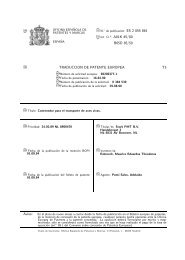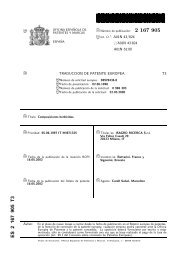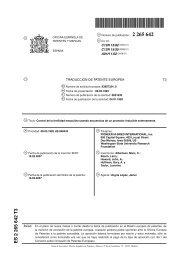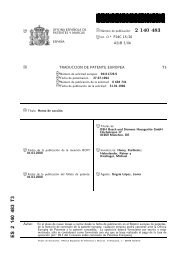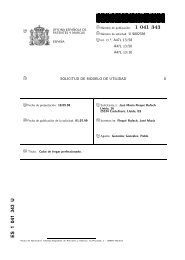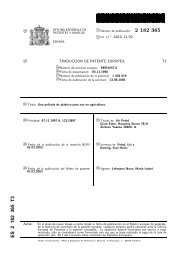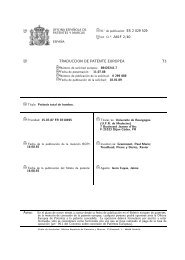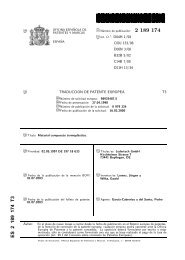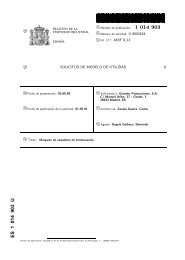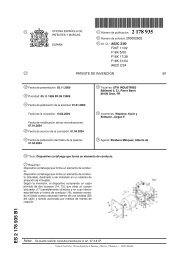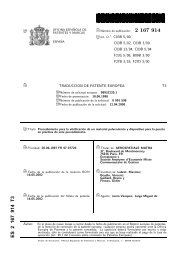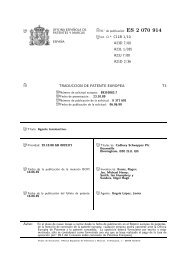USO DE COMPUESTOS PARA ELEVAR LA ACTIVIDAD DE ... - Inicio
USO DE COMPUESTOS PARA ELEVAR LA ACTIVIDAD DE ... - Inicio
USO DE COMPUESTOS PARA ELEVAR LA ACTIVIDAD DE ... - Inicio
You also want an ePaper? Increase the reach of your titles
YUMPU automatically turns print PDFs into web optimized ePapers that Google loves.
5<br />
10<br />
15<br />
20<br />
25<br />
30<br />
35<br />
40<br />
45<br />
50<br />
55<br />
60<br />
65<br />
Ejemplo 294<br />
ES 2 217 754 T3<br />
(R)-N-{2-Cloro-4-[4-(N-2-hidroxietilcarbamoil)-fenilsulfonil]fenil}-2-hidroxi-2-metil-3,3,3-trifluoronroranamida<br />
Se calentó a 50ºC durante 30 minutos una disolución de 1,1’-carbonildiimidazol (0,169 g) y (R)-N-[2-cloro-4-(4carboxifenilsulfonil)fenil]-2-hidroxi-2-metil-3,3,3-trifluoropropanamida<br />
(Ejemplo 121) (0,30 g) en DMF (1 ml)/acetato<br />
de etilo (9 ml). Se añadió etanolamina (0,055 ml), y la mezcla se calentó y se agitó otras 17 horas. La mezcla se<br />
enfrió, se diluyó con acetato de etilo (50 ml), se lavó con ácido clorhídrico acuoso diluido (25 ml), agua (25 ml),<br />
disolución acuosa saturada de hidrogenocarbonato de sodio (25 ml) y salmuera, y entonces se secó. El material volátil<br />
se eliminó por evaporación, y el residuo se purificó mediante cromatografía, eluyendo con 2,5% de metanol/acetato de<br />
etilo, para dar el compuesto del título (0,25 g) como un sólido. NMR (CDCl3 + DMSO-δ6): 1,58(s, 3H), 3,44(m, 2H),<br />
3,62(m, 2H), 4,26(t, 1H), 7,05(s, 1H), 7,76(dd, 1H), 7,83-8,01(m, 6H), 8,56(d, 1H), 9,73(brs, 1H); MS (ESP − ): 495.<br />
Ejemplos 295-303<br />
Los siguientes compuestos se prepararon siguiendo el procedimiento del Ejemplo 294, usando los materiales de<br />
partida apropiados.<br />
111



